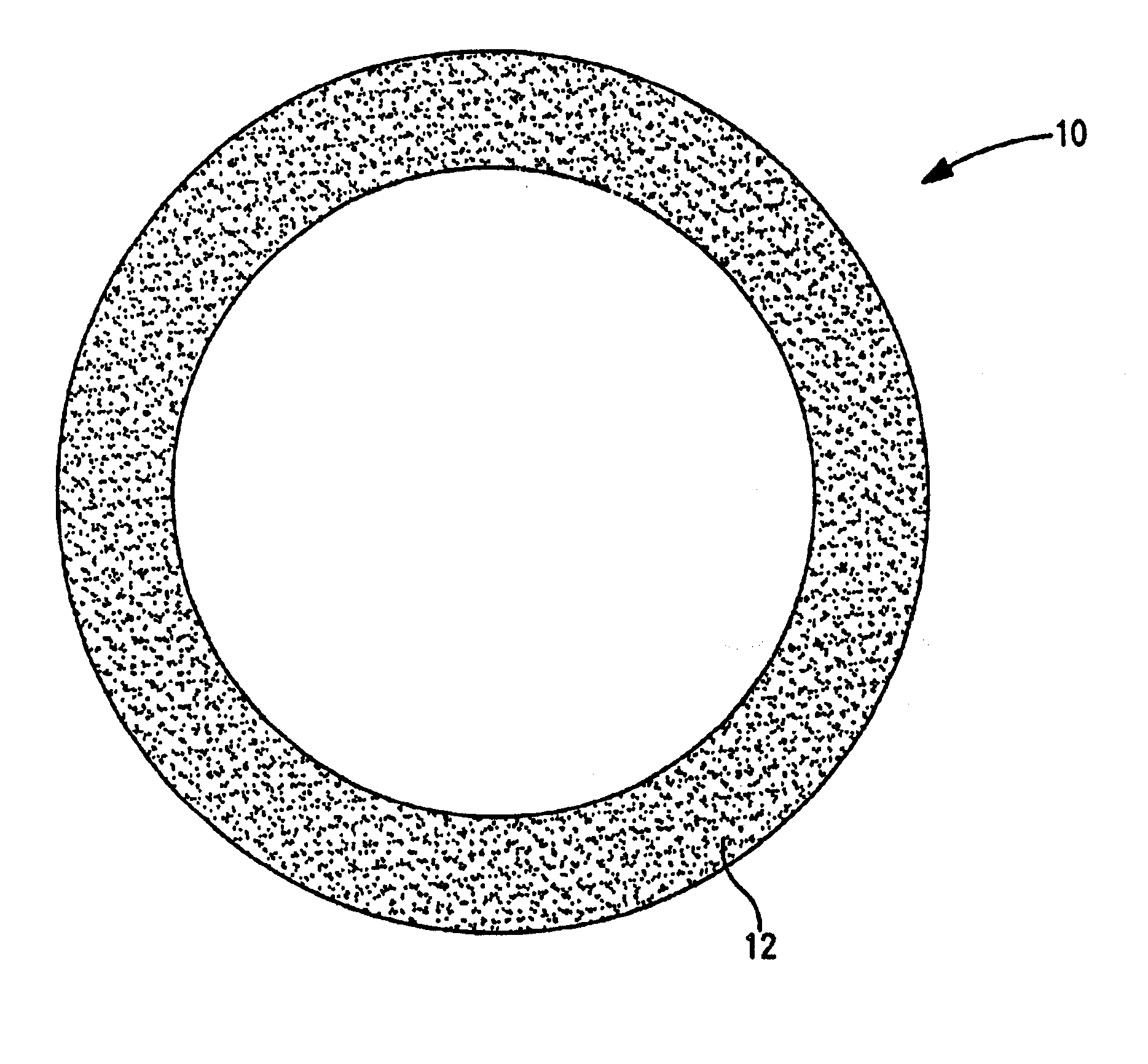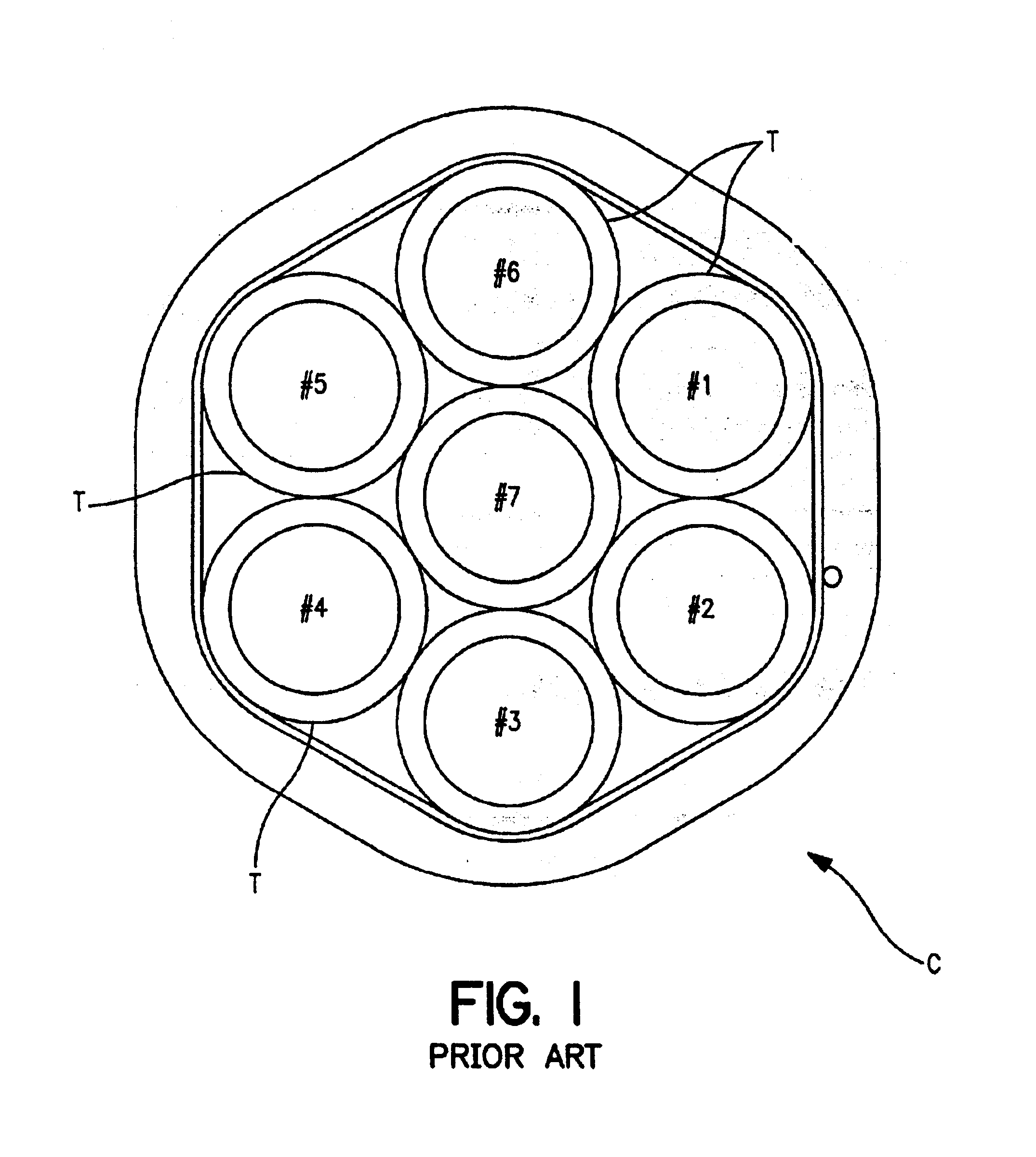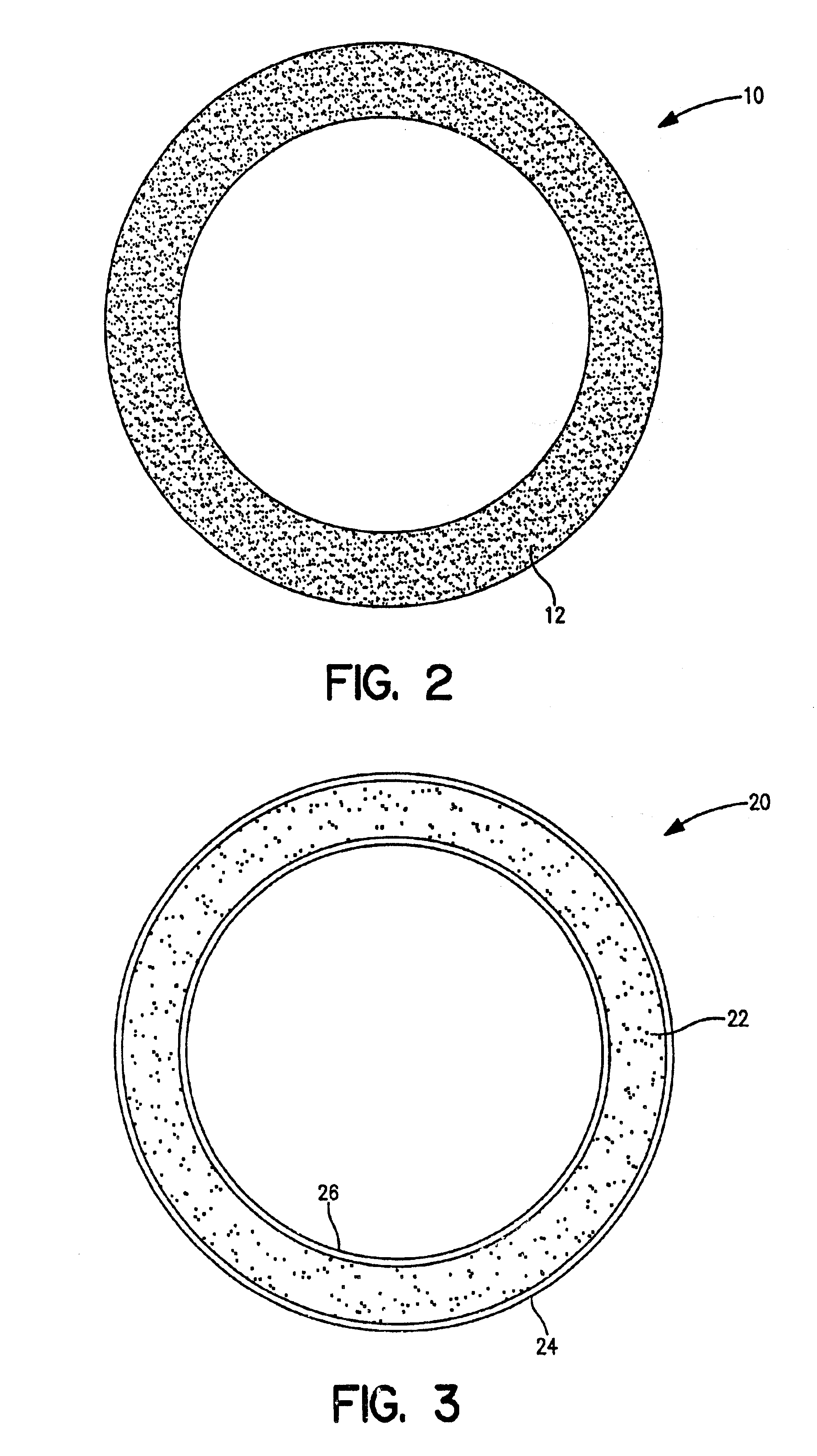Air blown fiber (ABF) cable with low composite coefficient of thermal expansion
a composite coefficient and air blown fiber technology, applied in the direction of fibre mechanical structures, instruments, optics, etc., can solve the problems of optical transmission signal loss, air blown fiber (abf) tube cables installed in harsh weather environments, induced signal attenuation, etc., to prevent deterioration of polymer, improve thermal stability, and improve thermal stability
- Summary
- Abstract
- Description
- Claims
- Application Information
AI Technical Summary
Benefits of technology
Problems solved by technology
Method used
Image
Examples
Embodiment Construction
Preferred embodiments of the improved thermal stability air blown fiber (ABF) tube and the air blown fiber (ABF) tube cable in accordance with the present invention are described below with reference to FIGS. 2-6 of the drawings.
Referring now to FIG. 1, prior art blown fiber (ABF) tubes T are shown that can be used alone or in an air blown fiber (ABF) tube cable C as depicted in FIG. 1. Air blown fiber (ABF) tube T as shown is capable of supporting installation of multiple air blown optical fiber units and providing for cabling system upgrade capability. Prior art air blown fiber (ABF) tube T and tube cable C can be formed in a wide variety of sizes and tube counts in accordance with customer demands. For example, air blown fiber (ABF) tube cable C may comprise multiple 8 mm air blown fiber tubes T formed from polyethylene and jacketed with polyethylene to form a tube cable with a finished outside diameter of 29 mm. The shortcomings of the prior art air blown fiber (ABF) tubes T and...
PUM
 Login to View More
Login to View More Abstract
Description
Claims
Application Information
 Login to View More
Login to View More - R&D
- Intellectual Property
- Life Sciences
- Materials
- Tech Scout
- Unparalleled Data Quality
- Higher Quality Content
- 60% Fewer Hallucinations
Browse by: Latest US Patents, China's latest patents, Technical Efficacy Thesaurus, Application Domain, Technology Topic, Popular Technical Reports.
© 2025 PatSnap. All rights reserved.Legal|Privacy policy|Modern Slavery Act Transparency Statement|Sitemap|About US| Contact US: help@patsnap.com



